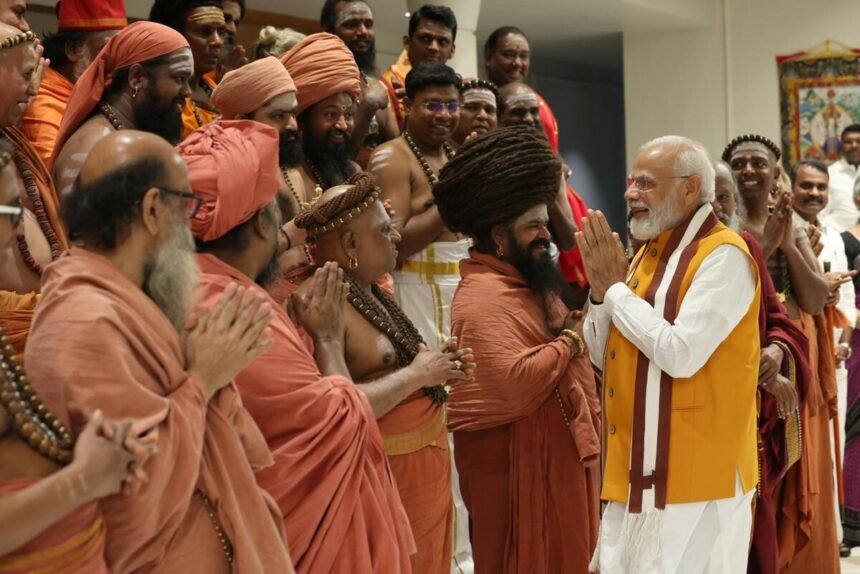The inauguration of the new parliament witnessed the historic scepter Sengol take center stage, yet it was the presence of pontiffs from 19 adherents (mutts) of Tamil Nadu that stole the spotlight. These adherence heads and Tamil singers, known as odors, were brought to the ceremony in a special flight, with arrangements made for their rituals over the preceding three days. The event held significance as it marked the presentation of the Sengol to Prime Minister Narendra Modi by six of the 19 adherence heads.
The Sengol, symbolizing righteousness and self-rule, was subsequently placed in the new parliament building by PM Modi himself, near the chair of the Lok Sabha Speaker. Four of the six chosen adherents have a historical existence of at least 400 years or roots in ancient India, further enhancing the significance of the occasion. The involvement of these adherence heads and the recognition bestowed upon them by the Prime Minister is expected to inspire their followers and contribute to the advancement of their religious activities.
The center’s efforts to honor not only the oldest and most popular adherents but also the rest were evident. Each mutt delegation received separate cars, spacious rooms, and the allowance to bring up to seven assistants to aid the elderly pontiffs. Such support and recognition from the government are seen as crucial, considering that many ancient adherents have disappeared due to a lack of support.
The transfer of the Sengol also holds historical significance, as in 1947, only one adherence presented it to Prime Minister Nehru. This time, six adherents had the honor, indicating the increasing recognition of their efforts to disseminate Saivite traditions among the people. Adheenams are Shiva-worshipping mutts known for their Tamil rituals and methods of worship.
The pontiffs hailed from various parts of Tamil Nadu, with three of the mutts—Thiruvavaduthurai, Dharmapuram, and Madurai—being among the oldest and most affluent. While several of the mutts are led by Saiva Pillai heads from forward caste communities, the inclusion of mutts with OBC leaders, such as Palani Bogar Samadhi, showcased diversity and inclusivity.
The adherence heads, accompanied by their aides and officials, were flown to the national capital in a dedicated flight. The Ministry of Culture ensured that two individuals, one proficient in Tamil, were assigned to assist the delegates. The provided satvik meals on the flight and throughout their three-day stay in a top hotel were prepared with meticulous consideration of their dietary restrictions and timing.
While critics have expressed concerns regarding the glorification of caste-related traditions and exclusivity, the adherence heads praised the government’s efforts. During their visit, they were also taken to historic temples in Delhi before being flown back.
In his address to the seers, PM Modi emphasized Tamil pride and the magnificence of ancient Tamil civilization, highlighting the contributions of people from the southern region to cities like Varanasi in religious matters. Union Ministers from Tamil Nadu, Nirmala Sitharaman (Finance Minister) and L Murugun (MoS), were also present at the meeting.
PM Modi acknowledged those who had belittled the Sengol, portraying it as a mere walking stick, and emphasized that it took a humble servant to retrieve it from a museum. The adherence head of Dharmapuram, Masilamani Desika Gnana Sampantha Paramacharya Swamy, regarded the Sengol installed by PM Modi as a symbol of justice for all and a harbinger of prosperity for the nation.
Although Dharmapuram and Madurai had experienced disagreements with the previous DMK government regarding interference in their traditions and functioning, officials indicated that those issues had now been resolved.
